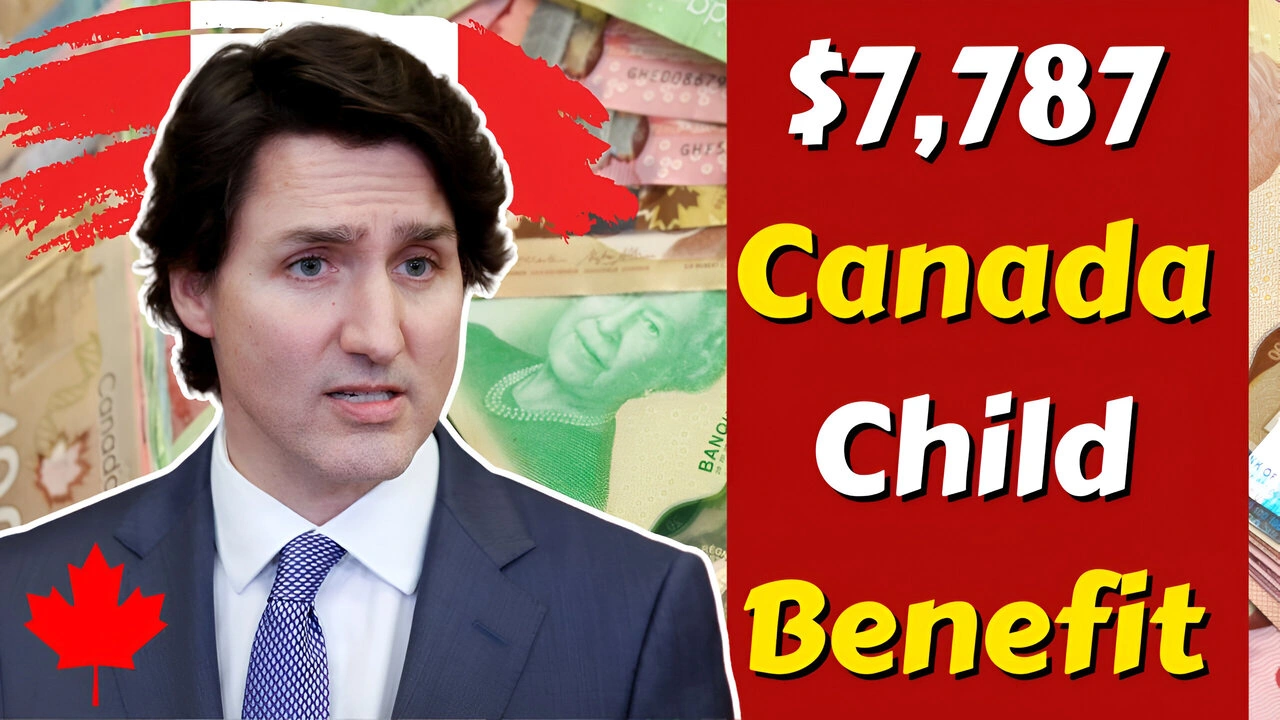In January 2025, eligible Canadian families will receive a tax-free payment of up to $7,787 through the Canada Child Benefit (CCB). This financial support is designed to help reduce the cost of raising children and is available to families across Canada. The CCB is a critical source of financial assistance for families, especially during times of economic uncertainty. If you’re wondering whether you’re eligible for this benefit and when you will receive your payment, keep reading for all the details you need.
What is the Canada Child Benefit?
The Canada Child Benefit (CCB) is a tax-free monthly payment provided by the Canadian government to eligible families with children under the age of 18. The amount of the benefit is determined based on the number of children in the household, the family’s income, and whether the family meets certain eligibility criteria.
The CCB helps reduce the financial burden of raising children by providing a substantial payment to families each month. This support can be used for everyday expenses such as food, clothing, education, and healthcare.
How Much Will You Receive?
The amount you will receive from the Canada Child Benefit varies based on several factors, including:
- Income: The CCB is income-tested, which means that the benefit decreases as your household income increases. Families with lower incomes will receive a higher benefit, while those with higher incomes may receive less.
- Number of Children: The more children you have, the higher the total benefit you could receive. The base amount increases for each additional child.
- Special Conditions: Families with children with disabilities or those in certain provinces may be eligible for additional payments.
In January 2025, eligible families can receive up to $7,787 annually for each child under the age of 6, and up to $6,500 per year for children aged 6 to 17. The exact amount you receive will depend on your family’s specific circumstances.
Eligibility Criteria for the Canada Child Benefit
To qualify for the Canada Child Benefit, you must meet the following eligibility requirements:
- Canadian Resident: You must be a Canadian resident for tax purposes. If you are a temporary resident or live outside Canada, you may not be eligible.
- Primary Caregiver: You must be the primary caregiver for the child. This means you are responsible for ensuring the child’s well-being, including food, shelter, and education.
- Income Threshold: The CCB is income-based. Families with higher incomes will receive reduced benefits, and those with very high incomes may not qualify for the payment.
- Child’s Age: The child must be under the age of 18. Different payment rates apply depending on the age of the child, with the maximum benefit typically going to families with children under the age of 6.
You will need to file your income taxes annually to continue receiving the benefit, as the amount of the payment is calculated based on your previous year’s tax return.
How to Apply for the Canada Child Benefit
If you’re applying for the CCB for the first time, you can apply online through the Canada Revenue Agency (CRA) website. Here’s how:
- Create or Log In to Your CRA Account: You will need a CRA account to apply. You can create an account or log in to an existing one on the CRA website.
- Submit Your Application: Once logged in, you can submit an application for the CCB. You’ll need to provide details about your family, including the number of children and your income.
- Provide Supporting Documents: You may need to upload supporting documents to verify your application. This may include your child’s birth certificate or proof of income.
- Wait for Confirmation: After submitting your application, you will receive a confirmation from the CRA. If you are eligible, the CCB will be processed, and you’ll receive your payments.
If you’re already receiving the CCB, you do not need to reapply unless your circumstances change (e.g., the birth of a new child or a change in income).
When Will You Receive Your Canada Child Benefit Payment?
The CCB is typically paid on a monthly basis. For families receiving the full benefit in January 2025, payments will be made at the beginning of the month. The exact payment dates are:
- January 2025: The payment will be made in early January. You will receive a lump sum amount, which could include retroactive payments if there were any adjustments to your benefit.
- Subsequent Monthly Payments: After January, payments will continue on a monthly basis, typically in the 20th to 23rd range of each month.
Payment dates may vary, so it’s important to regularly check the CRA website for updates or any changes to the schedule.
How to Track Your Canada Child Benefit Payments
You can track your CCB payments by logging into your CRA account. Here, you will find information about:
- Payment Amounts: You can see how much money you are receiving for each payment.
- Upcoming Payments: Check when your next payment is scheduled to arrive.
- Payment History: Review your past payments to ensure that they match your expectations.
If there are any discrepancies or delays with your payments, you can contact the CRA for clarification and assistance.
Additional Benefits for Families
In addition to the CCB, there are other financial benefits available to families with children. These include:
- Child Disability Benefit: If you have a child with a severe and prolonged disability, you may be eligible for additional financial support through the Child Disability Benefit (CDB).
- Provincial Benefits: Some provinces offer additional child benefits or tax credits to families. These benefits can vary by region, so check with your provincial government to see if you’re eligible.
- Family Tax Credits: There are various tax credits available to families with children, which can help reduce your tax burden.
Conclusion
The Canada Child Benefit is a valuable resource for families, providing financial support to help with the costs of raising children. With the maximum benefit of up to $7,787 in January 2025, this tax-free payment can make a significant difference in the lives of eligible families. To ensure you’re receiving your benefit, be sure to check your eligibility, apply online, and stay updated on payment schedules.




